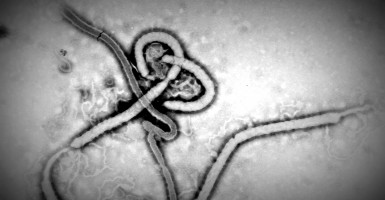A second case of Ebola has Americans rightly scratching their heads. Does our government really know what it’s doing? From the way the U.S. government communicates “risks” sometimes, it’s hard to tell.
The single most important tool the government has for responding to a public health threat such as Ebola is “legitimacy.” When Americans believe what they are being told, Washington has the partner it needs to ensure the public is kept safe from deadly diseases.
Sadly, the U.S. government’s response to the latest case in Dallas illustrates how quickly Americans are losing confidence in this administration.
There is an enormous amount of research explaining how to effectively communicate risks to the American public. Basically, there are three elements in an effective message.
First, the message must be credible. The White House has been off-message on credibility from day one. The president’s line was basically “don’t worry, be happy,” this is a problem to be dealt with over there–not here.
That was an unwise approach.
In the modern global world, virulent, communicable diseases can “find a way” to spread, despite the best efforts and the most stringent measures to stop them. Ebola, particularly, is a deadly and horrifying disease. The White House erred by not talking early and often about what needed to be done to deal with preventing an outbreak here.
Second, messages must be understandable. Few Americans are experts in infectious disease. Most of what we know comes from watching movies and televisions. Screenwriters are more interested in making entertaining movies than being sticklers for facts. And when it comes to disasters, writes University of Texas Professor David A. McEntire, “many of Hollywood’s portrayals are based on myths and exaggerations….” That’s certainly the case when it comes to disease disaster films. That puts an added pressure on public officials to be accurate and clear.
Third, messages must be actionable. Americans must understand there are steps they can take or steps being taken to make them safe.
The second case of Ebola raised all kinds of red flags to Americans. When a nurse was diagnosed with the disease, many rightly became concerned. If a hospital can’t protect its own workers, how can the government assure us the disease won’t spread to the community?
The director of CDC first erred by leaving the impression that it was the healthcare worker’s fault.
That explanation only angered many who believed the CDC was just shifting the blame.
The explanation was later “explained.” Now, the CDC wasn’t sure how the individual got infected. Instead, the CDC would have to examine the protocols for patient care and update them if need be. But that “explanation” just triggered more headlines suggesting the CDC didn’t know what it was doing.
It is long past time for the administration to get its house in order on this one. That will require an extraordinary attitude adjustment from this White House.




























